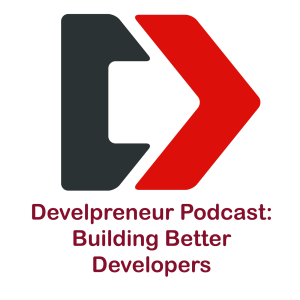
Finding Balance: The Importance of Pausing and Pivoting in Tech
 2024-07-30
2024-07-30
Hello, and welcome back to another episode of our podcast series on the developer journey. Today, we’re diving into a crucial topic: finding balance by knowing when to take a step back, pause, or even pivot. This is particularly significant in the tech world, where developers often find themselves deep in the weeds, laser-focused on their projects.
One of the biggest challenges developers face is distinguishing between being busy and being productive. This issue often manifests early in a developer’s career but can persist even for seasoned professionals. You might find yourself constantly thinking, “I’m almost there. Just one more configuration file, and it’ll all work.” However, technology projects are often like peeling an onion—there’s always another layer.
This continuous chase can lead to a cycle where the endorphin hit of “almost finishing” becomes addictive. Yet, there comes a point where you’re no longer productive but merely spinning your wheels. Recognizing when you’re at this juncture is crucial for maintaining long-term productivity and avoiding burnout.
Signs You’re Struggling with Finding BalanceBurnout isn’t just about hitting a wall; it’s a gradual decline in productivity and enthusiasm. Early signs include feeling less effective, experiencing frustration, and finding it harder to move projects forward. When these signs appear, it’s essential to take a break, whether it’s a short walk, a vacation, or simply a day off.
As developers, we are not machines. Continuous work without adequate breaks can lead to diminishing returns and, eventually, burnout. Finding the balance between work and rest is not a luxury but a necessity for maintaining high productivity levels and staying mentally healthy.
Effective Strategies for Finding Balance in a Hectic Work ScheduleImplementing personal guardrails can help manage your workload and prevent burnout. Here are a few strategies:
1. Use Your Calendar: Schedule regular breaks and stick to them. This could be daily workout sessions, weekend off-days, or family time. These scheduled breaks act as natural barriers to prevent overworking.
2. Recognize Patterns: Pay attention to how often you’re working on the same issue. If you find yourself repeatedly fixing the same problems, it might be time to reassess your approach or take a break to gain a fresh perspective.
3. Set Priorities: Not everything is equally critical. Sometimes, managers or clients might perceive all tasks as urgent. It’s essential to have a conversation to prioritize tasks realistically and push back when necessary.
Using Guardrails for Finding Balance in Your Daily RoutineTaking a break isn’t just about avoiding burnout—it’s also about gaining clarity. When you’re constantly firefighting and dealing with immediate issues, you lose sight of the bigger picture. Stepping back allows you to reassess your approach and ensure you’re not just addressing symptoms but solving the core problems.
How Taking Breaks Can Aid in Finding BalanceCreating a sustainable workflow involves balancing work and rest. Here are some tips:
1. Pomodoro Technique: This method involves working in focused intervals (usually 25 minutes) followed by short breaks. It’s an effective way to maintain concentration and avoid burnout.
2. Mindfulness and Reflection: Regularly take a step back to reflect on your progress and workload. This can help you catch early signs of burnout and make necessary adjustments.
3. Leverage Tools: Use tools and techniques that help manage your workload without overwhelming you with notifications. For instance, focus modes on your devices can help reduce distractions during work periods.
Tools and Techniques for Finding Balance in Your WorkflowFinding balance is key to maintaining productivity and avoiding burnout in the developer journey. Recognize the signs of burnout early and take proactive steps to manage your workload. Implementing guardrails, prioritizing tasks, and knowing when to step back is crucial for maintaining long-term productivity and mental health.
The Long-Term Benefits of Finding Balance in Your CareerRemember, taking a break doesn’t mean you’re slacking off; it means you’re investing in your long-term success and well-being. So next time you find yourself deep in the weeds, consider stepping back, taking a break, and returning with a fresh perspective. Your work—and your sanity—will thank you for it.
The Key Takeaways for Finding Balance as a DeveloperIn conclusion, finding the balance between work and rest is crucial for developers. By recognizing the signs of burnout, setting guardrails, and knowing when to step back, you can maintain productivity and mental health in the long term. Embrace breaks and downtime as essential components of your work routine to ensure sustained success in your developer journey.
Stay Connected: Join the Developreneur CommunityWe invite you to join our community and share your coding journey with us. Whether you’re a seasoned developer or just starting, there’s always room to learn and grow together. Contact us at info@develpreneur.com with your questions, feedback, or suggestions for future episodes. Together, let’s continue exploring the exciting world of software development.
Additional Resources- Avoid Burnout – Give Time To Yourself
- Detecting And Beating Burnout – An Interview with Victor Manzo
- Three Signs Of Burnout – Address These Before Its Too Late
- Three Ways To Avoid Burnout
- The Developer Journey Videos – With Bonus Content
More Episodes
 2022-06-14
2022-06-14
 2022-06-09
2022-06-09
 2022-06-07
2022-06-07
 2022-06-02
2022-06-02
 2022-04-26
2022-04-26
 2022-04-21
2022-04-21
 2022-04-19
2022-04-19
Create your
podcast in
minutes
- Full-featured podcast site
- Unlimited storage and bandwidth
- Comprehensive podcast stats
- Distribute to Apple Podcasts, Spotify, and more
- Make money with your podcast
It is Free
- Privacy Policy
- Cookie Policy
- Terms of Use
- Consent Preferences
- Copyright © 2015-2024 Podbean.com




